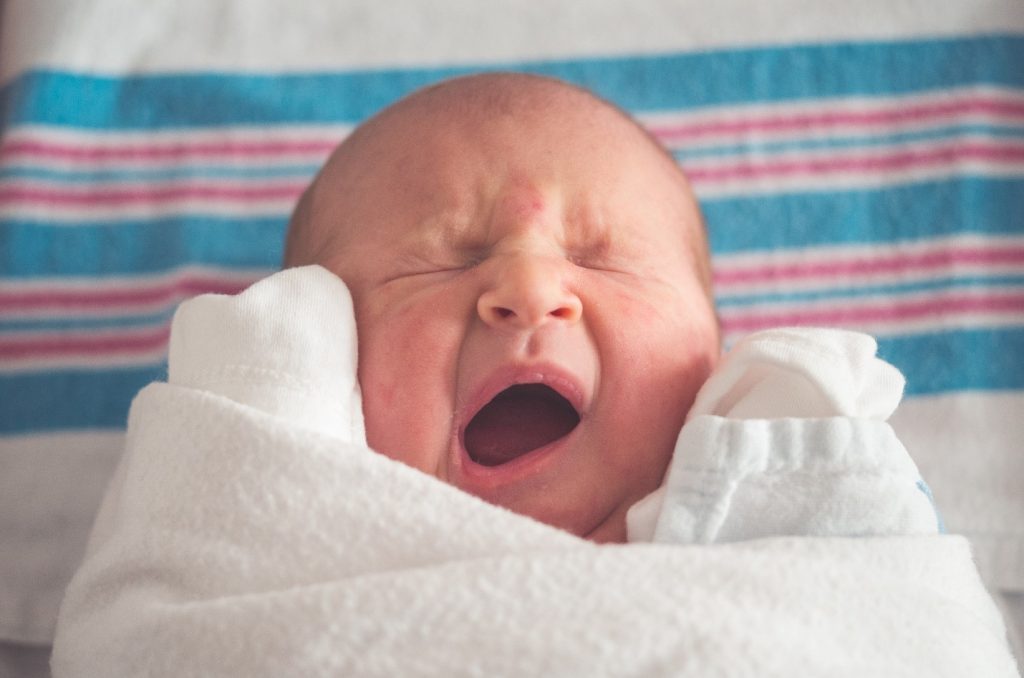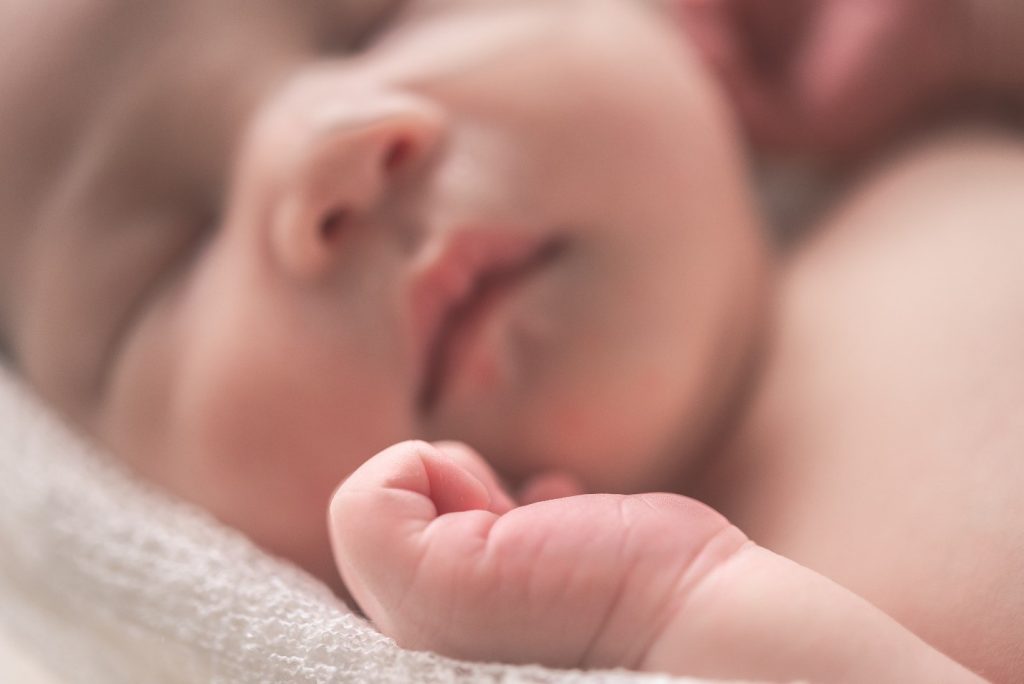The baby’s body is a sensitive machine that has yet to fully develop. In times of low temperature, the body redirects blood flow toward the internal organs. This causes the body’s extremities to get significantly colder than the rest of the body. When this happens, the baby then diverts energy they need for growth and development to simply keep the body warm. Thus, it is imperative to keep the baby’s hands warm, especially when the temperature gets low at night.
There are three primary ways to keep a baby’s hands warm at night. The first way is to maintain the temperature in the nursery at ambient levels, preventing the hands to get too cold in the first place. Mittens are also capable of keeping a baby’s hands warm when temperatures get low. Lastly, swaddling can help keep the hands warm as the baby’s arms are tucked into the snug swaddle.
This article will detail the various effective ways to keep a baby’s hands warm at night.
How to Keep Baby’s Hands Warm at Night
-
Set the Right Temperature
One of the best ways to ensure that your baby’s hands stay warm at night is having the ability to control the temperature in the nursery. Ideally, the nursery would have its own thermostat to allow you to specifically set the nursery to a comfortable temperature. However, there are other ways to maintain the temperature in a nursery.
Although the American Academy of Pediatrics does not have an exact temperature recommended to keep the nursery at, the Safe Sleep Academy does suggest keeping the temperature between 68 and 72 degrees Fahrenheit (20-22 degrees Celsius).
Even with a thermostat, it is also recommended to keep a room thermometer in the nursery. Having a room thermometer can help put your mind at ease and make sure that the temperature in the nursery is known and maintained.
By setting the temperature to ambient levels, you bypass the concern of warming the baby’s hands as the environment becomes totally conducive and safe for your baby.
While some parents might think that it is okay to have the nursery a little cooler since the baby can wear additional layers, it is important to remember that the American Academy of Pediatrics warns that babies should not be wearing one layer more than an adult would be comfortable wearing in the same environment. Unnecessary additional layers can potentially lead to overheating.
-
Mittens
Mittens are also a great option for keeping your baby’s hands warm at night. Even during the colder seasons, it would benefit babies to wear mittens to help prevent heat from escaping their hands.
When the temperatures get low, the first parts of the body that become susceptible to the cold are the extremities, such as the ears, feet, and hands.
While proper mittens can be purchased from baby stores, other parents simply resort to putting socks on their baby’s hands. However, results may vary since some parents claim that they cannot get socks to stay on their baby’s hands as their baby would constantly be removing them.
You might also have other mittens you could use. Many parents get mittens for their infants to prevent themselves from scratching their faces when they sleep. If you have these anti-scratch mittens, you might also be able to use them too. These mittens have the advantage of having a proper way of staying on the baby’s hands, unlike socks.
-
Swaddle
Swaddling is the traditional technique of wrapping the baby in a snug blanket. While normal baby blankets can be used, there are specialized swaddling blankets that can also be purchased. These swaddling blankets come with accessories (e.g., straps, fasteners, pockets, etc.) to help parents secure the blanket in a swaddle.
Aside from keeping the baby warm, swaddling is said to help calm the baby as the snug embrace of the swaddle imitates the familiar environment of the mother’s womb. While it has not been thoroughly studied, many parents believe that swaddling helped their babies sleep better.
Since swaddling can be quite a useful trick to know, it is important for parents to learn how to swaddle their babies.
Swaddling begins by folding a standard receiving blanket (40 x 40 inches) into a triangle. The baby is then gently laid on top of the triangle with their shoulders just below the folded corner. Place the baby’s right arm along their body and take the same side of the blanket and fold it over the baby’s chest, tucking it under the baby. This should secure the baby’s right arm. The bottom corner is then folded up over the baby’s feet and tucked into the swaddle. Lastly, the left arm is placed along the baby’s body and the same side of the swaddle is folded over the body and tucked in as well.
Signs that Baby is Cold
With regards to keeping babies warm at night, it is important for parents to learn the signs to look out for to determine if their babies are cold.
-
Cold Extremities
As previously mentioned, the extremities (i.e., hands, feet, ears) are the parts of the body that get cold first. This is because the body directs blood flow inward as a mechanism against the cold, leaving outward appendages such as the extremities to become much colder than the rest of the body.
Fortunately, this makes it easy to determine if your baby is cold or not by touching their hands and feet. These should be warm just like the rest of the body. Thus, a cold hand or foot should indicate to the parent that the baby might be happier with a little more warmth.
-
Paleness
As the temperature continues to remain low, the body prioritizes keeping the internal organs at body temperature. Just like how the extremities soon lose blood, so does the skin. When people get too cold, their skin soon exhibits a degree of paleness.
It is important to act quickly when a baby exhibits paleness because this symptom, along with lethargy and inactivity, can indicate hypothermia. At this point, it is important to warm the baby up. This can be done by wrapping them in additional blankets or by providing skin-to-skin contact for some transfer of warmth.
Risks of Getting Baby’s Hands Cold
Aside from being uncomfortably cold, one of the greatest risks of having your baby get cold is sudden infant death syndrome (SIDS). Also known as cot death, SIDS is the sudden unexplained death of infants under a year old.
Although the modern rates of SIDS have dramatically decreased from 130 deaths per 100,000 live births in 1990 to 33 deaths per 100,000 live births in 2019, the specific causes of SIDS have yet to be elucidated. Experts suggest that SIDS can be caused by a multitude of factors, occurring at a particular stage in the baby’s development.
Environmental stress is one of the primary suggested causes of SIDS. These environmental stressors can include tobacco smoke, choking hazards, strangulation hazards, and such.
Another theory as to how SIDS operates is that these babies have yet to develop the necessary adaptations to these stressors. It is also believed that it is possible these babies have yet to develop the ability to regulate involuntary processes such as maintaining a heartbeat, maintaining breathing, and regulating body temperature.
The American Academy of Pediatrics outlines several recommendations to reduce the likelihood of SIDS. These recommendations include the following:
- Always have the baby sleep on their back.
- Use a firm mattress.
- Breastfeed.
- Have the baby sleep in the parents’ room, but not in the parents’ bed.
- Avoid having soft and loose objects in the baby’s sleep area.
- Avoid smoke exposure before and after birth.
- Avoid alcohol consumption before and after birth.
- Avoid overheating the baby.
- Receive regular prenatal care during pregnancy.
- Have the baby up to date with immunizations.



